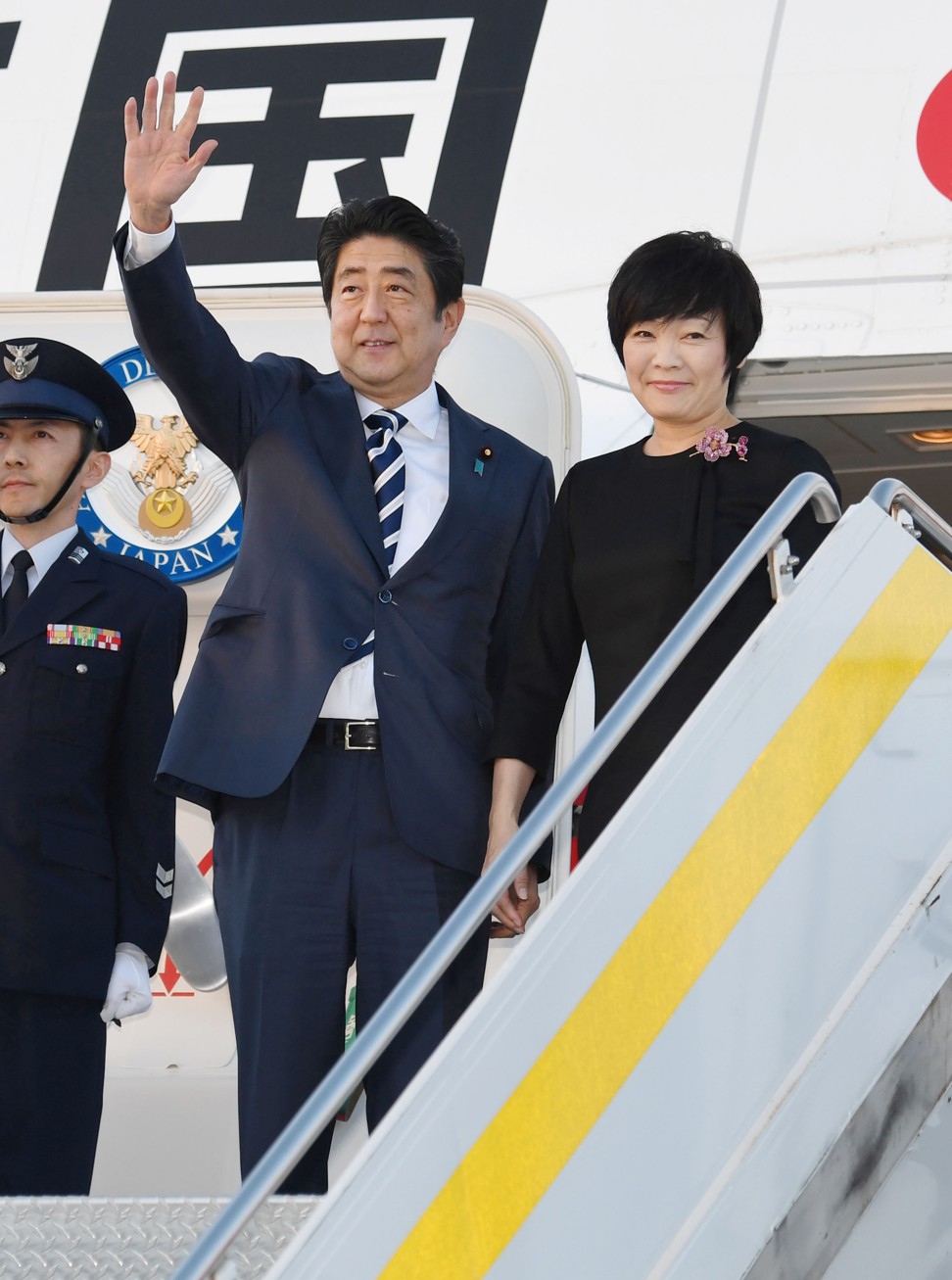
Explainer | Explained: Shinzo Abe
- If he is still in office in November 2019, Abe will overtake Taro Katsura as Japan’s longest-serving prime minister
- Abe’s time in power has been marked by his signature economic reforms and a more hawkish foreign policy

Rise, fall and return
Abe was born in 1954 in Tokyo to a political family. His grandfather, Kishi Nobusuke, was imprisoned as a suspected war criminal before serving as prime minister between 1957 and 1960. His great-uncle, Eisaku Sato, held the same position between 1964 to 1972.
Abe studied political science in the 1970s in the US. He joined the LDP and in 1982 became the secretary to his father, Abe Shintaro, who was serving as foreign minister.
In July 2006, he became prime minister and was Japan’s youngest leader since Fumimaro Konoe in 1941. However, by September 2007, his popularity had plummeted due in part to a series of financial scandals, causing his party to lose control of the upper house. Abe resigned and Yasuo Kukuda became prime minister.
In 2012, Abe was re-elected leader of the LDP and two months later was elected to a second term as prime minister, this time as part of a coalition between LDP and the New Komeito party.
He angered China and South Korea by visiting Tokyo’s Yasukuni Shrine, a memorial to the country’s war dead, including several war criminals. Visits to the shrine by Japanese politicians have remained a source of diplomatic tension between Japan and its neighbours, who claim it suggests a lack of contrition for wartime atrocities.
A more hawkish foreign policy
The LDP won a snap election at the end of 2014, prompting Abe to introduce a bill authorising Japan to deploy its Self-Defence Forces overseas to defend allies or to confront a direct threat. The legislation provoked protests in the streets but was enacted in 2015.
The opposition criticised the Abe administration for violating Article 9 of Japan’s post-war constitution, which renounces war and bars the country from maintaining a military force. Critics fear the changes in defence policy would involve Japan in conflict as an ally of the US.
Abe’s government justified the new law by pointing to China’s growing military might and North Korea’s nuclear capabilities.
The US-Japan security alliance provides US armed forces with bases and ports in exchange for the guarantee of Japan’s security. About 50,000 American troops are currently stationed in Japan.

Abenomics explained
According to Abe, his approach combines “bold monetary policy, flexible fiscal policy and a growth strategy that encourage private investments”. Abe aimed to lift inflation above 2 per cent and drive growth to make the Japanese economy more competitive long-term.
In the early 1990s, Japan’s real estate and stock market prices were inflated. This asset bubble burst in 1992 and the Japanese economy stagnated as a result. Different governments have tried to counter the situation by increasing public spending and lowering interest rates. A certain amount of economic recovery was achieved.
Abe’s solution was to increase domestic spending and lead the country towards a sustainable recovery through three different methods or “arrows”.
The first is renewed fiscal stimulus worth trillions of yen, particularly through infrastructure projects.
The second “arrow” and probably the most widely discussed, was a new monetary policy adopted by Japan, lowering interest rates and initiating a massive asset purchase programme. By 2015, the total amount of assets owned by the Bank of Japan (BOJ) amounted to about 70 per cent of the GDP of the country. By comparison, the US Federal Reserve’s assets amount to 25 per cent of the country’s GDP.
The third of Abe’s “arrows is a raft of structural reforms to liberalise the labour market and the agricultural sector, including corporate governance reform, measures to help entrepreneurs and bring more women into the work force.
Have Abenomics worked?
Japan has benefited from periods of economic growth and low unemployment since Abe implemented his programme. Inflation, however, has remained lower than 2 per cent and the BOJ has conceded it will not reach that target until 2021.
Japanese corporations have also been reluctant to increase wages. In 2017, real wages fell 0.2 per cent, and household spending slowed by 0.1 per cent. Abe’s reforms have also had limited success in putting more Japanese women to work. He may need to pursue more aggressive structural reforms or increased immigration.
Some analysts worry the aggressive monetary and fiscal policies could leave the BOJ and the government little room to move in the event of any new economic crisis.
To offset some of these risks, Abe raised the national consumption tax from 5 per cent to 8 per cent in 2014, leading to recession. Another raise, planned for 2017, was postponed until 2019.
Furthermore, some have criticised a new possible “boom” in unnecessary infrastructure, recalling the trillions of dollars spent building roads and bridges during the 1990s.

Domestic scandals and international standing
Abe was the first international leader to visit Trump upon his election as US president in 2016.
Domestically, Abe survived a corruption scandal involving several of his cabinet members: public land was sold to a right-wing school for a discounted price and Akie Abe, the first lady, was involved in the transaction.

